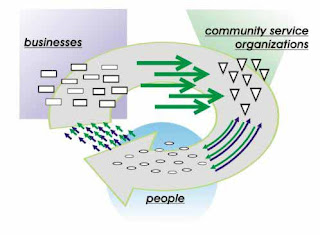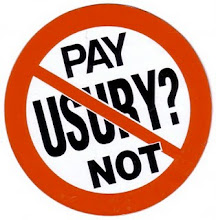
By John "The Engineer" Turmel aka "King of the Paupers"
http://johnturmel.com/poembank.htmThe record most successful case was in the British Isle,
Where "Tallies," sticks of money, left King Henry I with smile.
Accountants in the Treasury would split the stick in two,
One half would be the money and the other half its due.
A tally worth a pound of gold to pay the King's expense,
The other half amounted to taxation that made sense.
The tax collectors through the land all had an easy way,
Since people had their tallies and enough the tax to pay.
The tallies funded projects and could pay for everything=,
With tallies matching tax, a hero, Henry I, their King.
For over 700 years, the tallies were in use,
But having lost control of money now is Crown's excuse.
Some presidents who of this Populist idea knew,
John Adams, Thomas Jefferson, and Andrew Jackson too.
Some brilliant scientific men were also of accord,
With Franklin. There was Thomas Edison and Henry Ford.
Now look at how it works today, let's get it understood=,
Replacing wooden tallies now is paper pressed of wood.
Two notes used in America can clearly show the way,
Both legal tender now down south. They can be spent today:
"United States Note" issued by the nation's Treasury,
And "Federal Reserve Note" which is banker's currency.
Their fronts are very similar except the name they state,
Their backs are very different, it means another plate.
The Government had given banks permission to create,
A batch of brand new money to be lent at interest rate.
The Government then borrowed from them and at their request,
The Congress passed the Income Tax to pay them interest.
One Congressman objected, Louis T. McFadden, loud,
"The greatest crime in history," he said with head unbowed.
Ten dollars out, eleven back, it often takes a while,
But after years, the end result's a melancholy style.
The money from the Treasury, its use did almost cease,
To pay the interest to banks, the taxes did increase.
And when we ask "The Treasury, why is it never used?"
In answer, we get silence and an attitude bemused.
So to this day the bulk of the American supply,
Is borrowed from the banks at rates that make debts multiply.
All Government=s do service debt by taxing you and me,
Instead of letting Treasury create it interest free.
I see no reason for a tax to pay them interest,
When use of plates by Treasury would lower taxes best.
The money from the Treasury was used down south before.
The "Greenback=s" used by Lincoln paid to win the Civil War.
The "Continentals" did their job until King George did state:
"There'll be no use of your own plates, for gold you'll have to wait."
Though we've been told that their revolt was over tax for tea,
Ben Franklin said "The war's because they took our currency."
Comments below are by John "The Engineer" Turmel re:
what's happening in Wisconsin ...JCT: Hope the protesting civil servants can wise up.
Wouldn't it be neat if they got the state to pay them with bonds and
all went back to work happy! Har har har. What an example. They did
it in Argentina. Gee, no one noticed?
Whose going to be first to do it outside Latin America where they were
led by Macho Man Governor while California was led by a Girlie Man
Governor.
Someone's going to finally do paycheck currency right, why not now?
And what about the guys who hear the Good News that they're going to
be getting interest-free loans, are argue they shouldn't.







